The customer journey seems to be pretty straightforward – but can become much more complicated as you expand into the details and different stages.
You might have already heard of the importance of monitoring and optimizing your customer journey and customer experience to reach your business goals. And while these two concepts are different, they have a complementary effect on ensuring better customer experiences, which translates to higher customer retention.
If you think you simply have to offer a product to your target audience for them to buy it, we have news for you: the reality couldn’t be more different.
This article will cover the three main stages of the customer journey in greater detail, focusing on customer behavior for every stage. We also discuss how customer analytics tools and customer journey maps can be a useful tool for product professionals and engineers for crafting a product that actually meets user needs.
Ready? Let’s dive into it.
What is the customer journey?
Before we discuss the various stages, let’s understand exactly what we mean by the customer journey.
It’s natural for a customer to interact repeatedly with a business, which results in a specific progression of users across various touchpoints. This also allows marketers to uncover critical obstacles and opportunities that can help them deliver better customer experiences. Think of the whole process as a roadmap that helps business owners plan for the future where the customer is concerned.
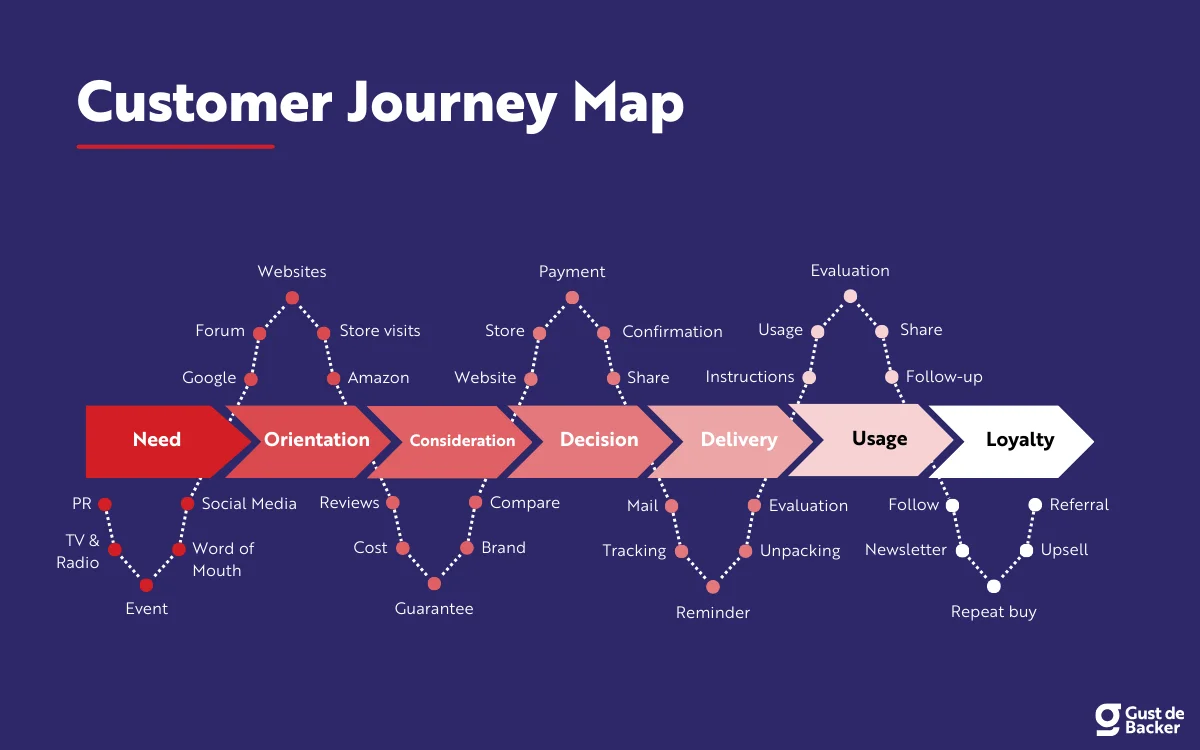 Source: Gust de Backer
Source: Gust de Backer
Customer journey stages: An in-depth analysis of the three stages
As mentioned before, there are three main stages of the customer journey:
1. The Acquisition Stage
The first stage is where everything is happening for the first time. The buyer has a specific pain point and is now exploring to find a fitting solution for this problem. They will likely first learn about your company through your marketing efforts, including organic searches, referrals from word-of-mouth, and other advertising channels.
A potential customer might then end up on your landing page or your website to explore your offerings. Here’s an example of a key landing page that our visitors explore.
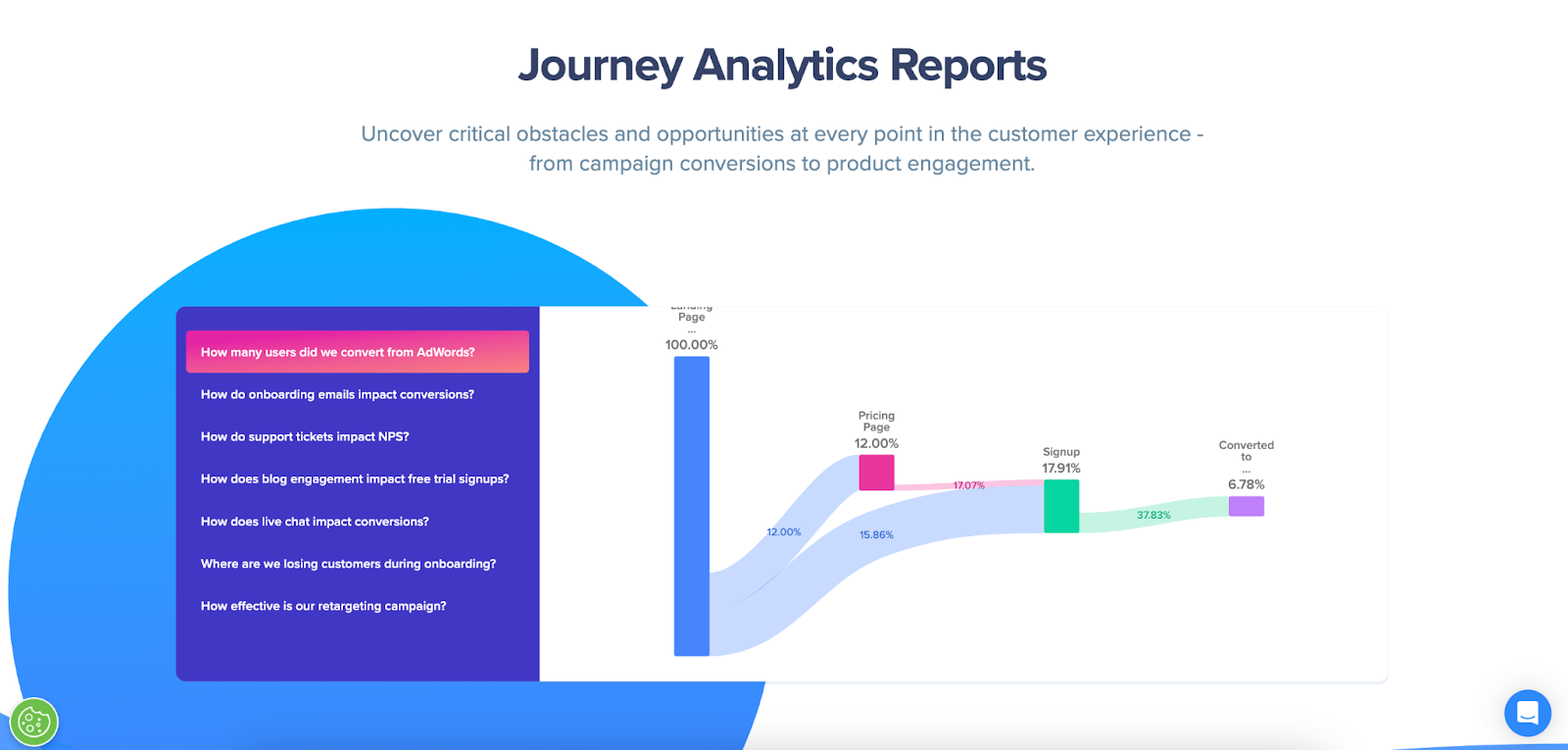
It’s at this point that it’s vitally important to enhance the user’s experience as much as possible through visually attractive designs and ensuring your site is responsive and easy-to-navigate.
It is highly recommended to invest in the services of a UX designer who has comprehensive and updated design knowledge to enhance the user’s individual experience as much as possible. For these reasons, 87% of hiring managers this year have stated that hiring UX experts has been a top priority for them.
Remember that from your perspective, the buyer is an active prospect, and it’s now your job to move them down the sales funnel. To better understand your brand and products, the customer can go through your content and watch explainer videos. If they like what they see, they will get in touch with your company by initiating a chatbot conversation or directly contacting your support team.
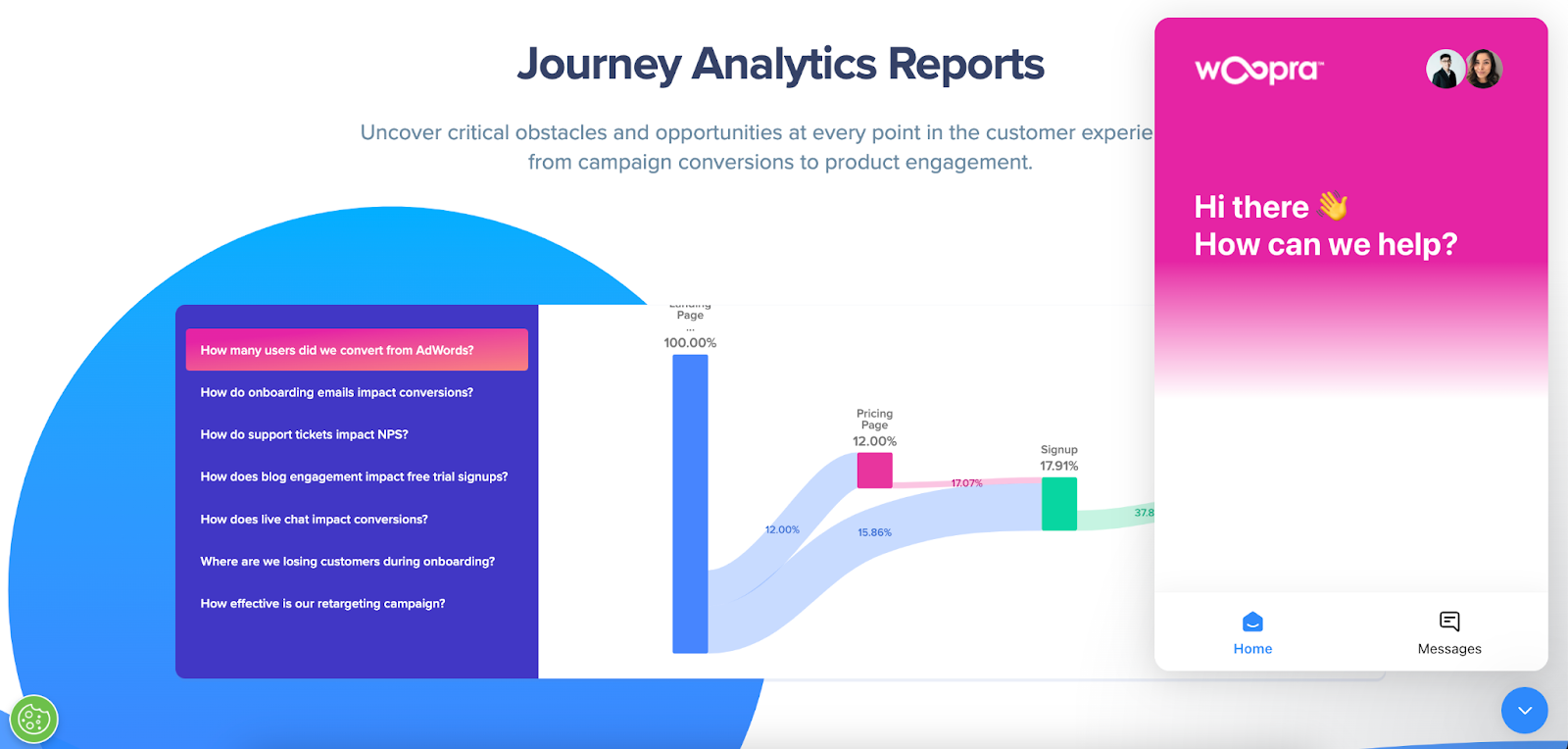 Also Read: Customer Retention Metrics
Also Read: Customer Retention Metrics
You should start engaging with the prospect at this point. But before you put in any effort, make sure your sales development rep cross-checks whether or not the prospect is qualified to become a lead.
We would highly recommend using the BANT (Budget, Authority, Need, Timing) method of lead scoring, which includes predetermined criteria for understanding whether customers will purchase your product or service. Your account executive should also focus all the efforts on converting every qualified lead to a customer by landing a sale.
At the end of the acquisition stage, the lead may either sign up for a trial or otherwise ask for a demo of the product, depending on how they like your services.
Acquisition Stage Touchpoints
In this stage, there are several touchpoints involving first-time contacts between the prospective buyer and your company.
For instance, one customer touchpoint could be clicking on your advertising campaigns or your links from other websites. Or they may read your blog posts, download whitepapers, or watch videos.
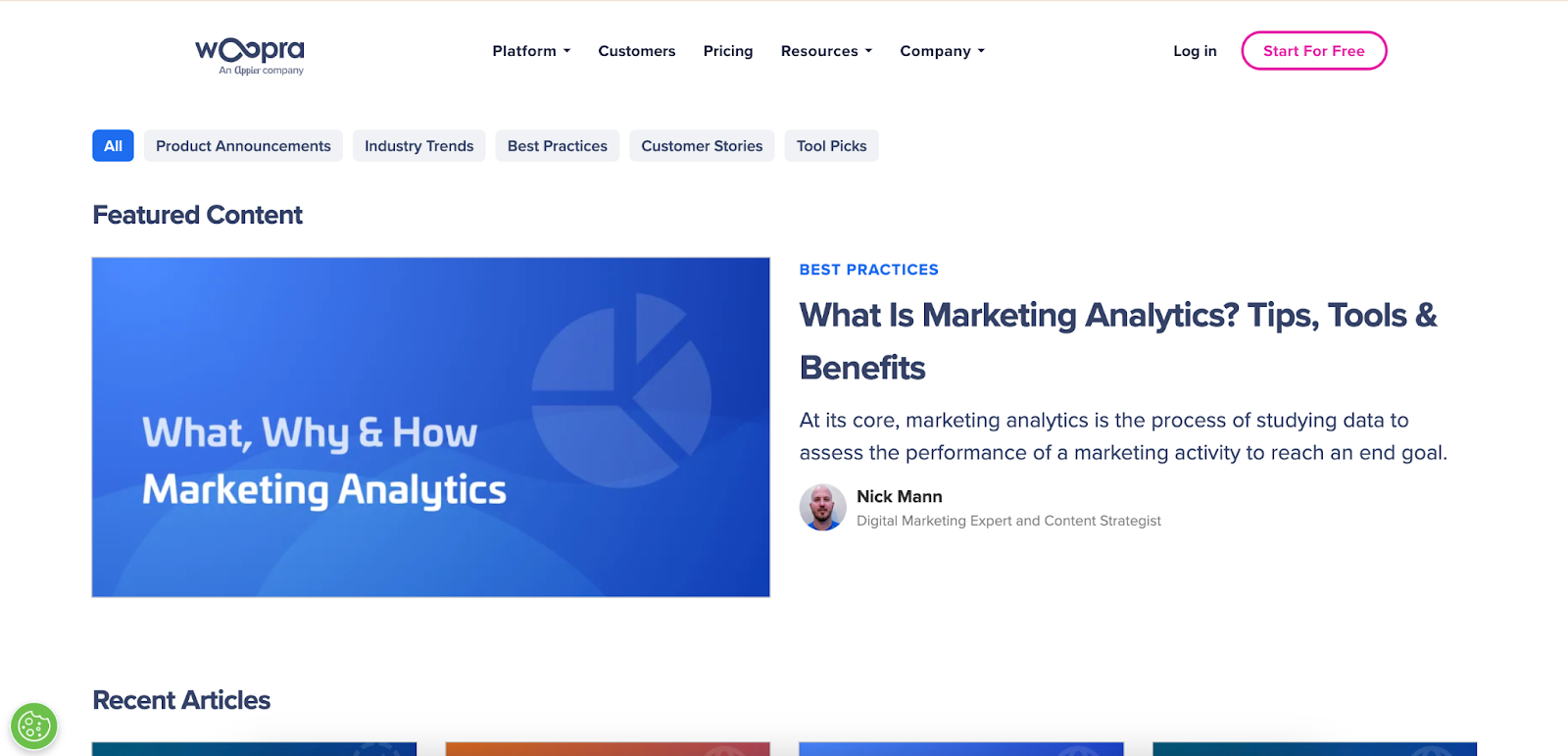
Don’t forget to add visuals like videos or images if you want to boost content readability and information retention. It can work wonders to arouse a prospect’s genuine interest in your products. It’s also normal for the lead to initiate chat conversations or submit forms to access gated content in this customer journey stage.
Outbound marketing strategies can be particularly useful in this stage. They will help you expand your reach and build lead lists to earn more revenue, provided you formulate a comprehensive marketing plan that includes building and protecting your company's digital persona and creating a highly-targeted email list. You must work on enhancing your PR efforts as well, while making sure the campaigns resonate with people's sentiments with the ongoing pandemic.
2. The Activation Stage
Things change dramatically once the lead moves to the activation stage.
Although many companies naively underestimate the importance of the activation stage, thinking it to be merely a transitional stage, it's here where the customer first starts to form opinions about your business. They can either become a promoter who speaks positively about your brand, or a detractor who wouldn’t recommend your brand to their acquaintances.
Here, your prospect will be referred to as the customer or user and will undergo an onboarding process, which is a crucial part of the customer journey since it creates an impact on the customer's mind with regards to your company and its services.
Interestingly, services in the activation stage differ according to the industry niche. For instance, e-commerce companies prioritize a user making their first purchase. The process starts with the user adding their product of choice to their cart, and then providing a payment method to finish up the order. Companies are already using innovative payment tools to make it easier for customers to pay by offering low credit card fees, multiple ways to pay, and the ability to set up recurring monthly payments for larger purchases.
![]() Source: Checkout.com
Source: Checkout.com
Activation Stage Touchpoints
Similar to the acquisition stage, the activation stage has several touchpoints, ranging from account creation to set up to exchanging onboarding emails. The main idea here is to include relevant documentation, guides, and training videos to make the onboarding as seamless as possible.
If your users or customers are falling out of the customer journey during the activation stage, you need to gather data to know why this is happening.
Direct customer feedback in the form of complaints, tickets, and customer service calls can help you here. Product analytics also provide valuable insights into customer behavior to show you exactly where users are dropping out so you can take steps to increase customer satisfaction and ultimately customer success.
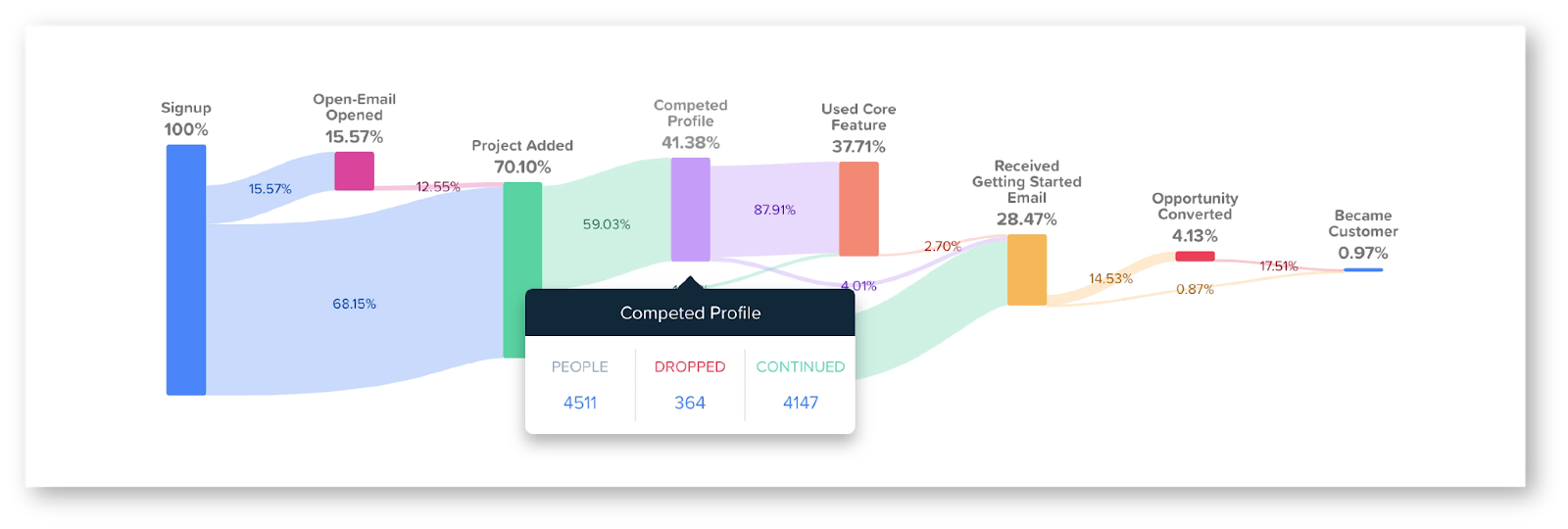
3. The Adoption Stage
This is the last stage of the customer journey where users incorporate your product or service as a part of daily life. The rule here is simple: the more customers use your product or service, the lower your rate should be.
A B2C customer, for instance, will use your product either for work or at home. On the other hand, a B2B customer may refer your product to their colleagues, which again can help you generate more revenue and gain more customers.
Remember how we mentioned a user could be a promoter or a detractor? Well, their opinions and feedback become more relevant than ever in the adoption stage. A promoter will defend your product as if it were their own. The situation will be the exact opposite in the case of a detractor.
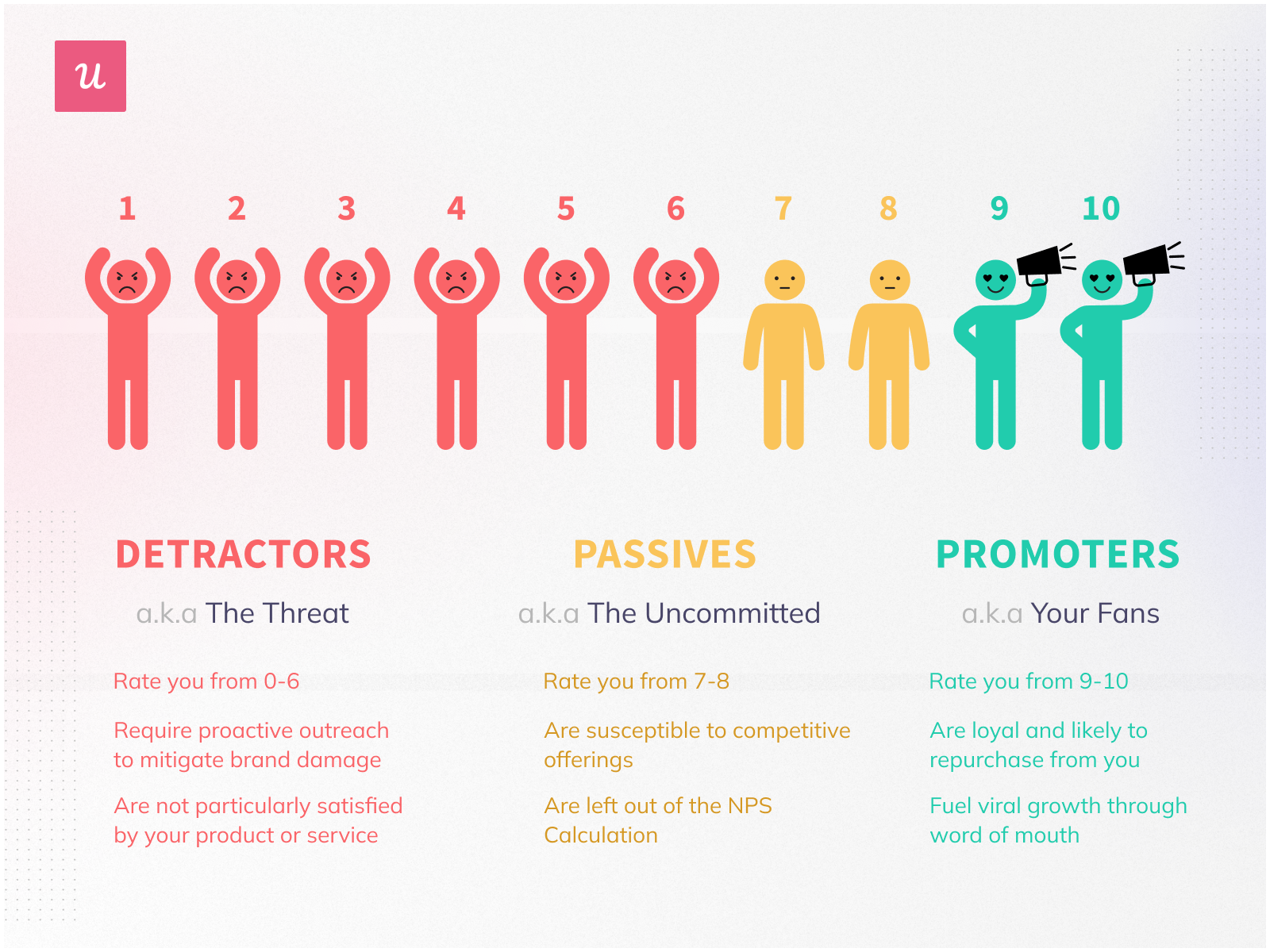 Source: Userpilot
Source: Userpilot
In addition to this, your actions will differ depending on your niche. For example, if you are a SaaS company, you should limit your conversations to product updates, new offerings, and best practices. Of course, you should contact the customer occasionally too, but take care not to overdo it. But if you’re a B2C seller, you’ll have to adopt a more personalized approach to make sure the customer purchases your products repeatedly.
Adoption Stage Touchpoints
Touchpoints in the adoption stage are mostly customer-oriented. The idea here is to encourage users to engage with the company as frequently as possible.
It is strongly suggested you set up social media or email marketing campaigns to stay connected with your current and prospective customers. Common email marketing services such as Active or Automizy allow you to automate sending your messages ahead of time, which makes it easier to keep customers in the loop about the recent events in your company or of any other special sales or discounts that they should know about.
Touchpoints include customer actions such as submitting support tickets, inviting other users, using advanced features, referring acquaintances and friends to your companies products or services, making payments, upgrading to higher-tier products, and so on.
How a customer journey map and analytics tools can help businesses satisfy user needs?
We live in an age where power has completely shifted from the brand to customers. You need to deliver a product or service that meets your customer’s needs and solves their pain points. The best way to do this is through using a customer journey map and analytical tools.
We’ve already discussed how every stage of the customer journey has several touchpoints, which is basically the point of contact between a customer and your brand.
This, in turn, allows you to understand their mindset that you can then use to map out your touchpoints. A customer journey map is a visual representation of this whole journey. If you don't have a customer journey map drawn up yet, a customer journey template can help you get started.
You can use this map to illustrate the story of your customers' experiences with your brand through all the various touchpoints that include social media reviews, website visits, customer service team interactions, and follow-up customer feedback surveys.
But to create this map, you’ll need access to specific information, and only then will you be able to step in your customer’s shoes and view things from their point of view. This is precisely where customer journey analytics can be instrumental.
Customer journey analytics allow you to centralize and analyze customer behavioral data across all touchpoints. Think of the whole process as behavioral targeting that will help you deliver better customer experiences by making well-informed decisions. Some of the most common analytics examples include journey reports and attribution reports.
These analytics can help you inform and validate customer journey mapping, enabling you to verify the effectiveness of every initiative for customer retention.
To understand how this works, you’ll have to take note of specific factors. Some of these include the following:
- Actions. Ask yourself what the customer will do at each of the customer journey stages – every little action counts.
- Motivations. Think of factors that encourage or discourage your customers from moving to the next stage and the kind of emotions they feel at every stage.
- Questions. Consider whether customers have a hard time finding answers to questions. If yes, can these difficulties cause them to abandon your product or service and go to your rivals? Think of how you can improve customer experience by addressing the specific questions.
- Obstacles. Try to figure out the obstacles you think customers might have to face at every stage. From return policy to extra shipping costs, anything can be an obstacle that may cause the customer to give up and not move to the next stage.
Once you figure out the answers to these questions, making a customer journey map should become much easier. And if you want to improve customer service efficiency, this is an initiative you must take.
Conclusion
Understanding the customer journey is tricky as it is. More so, with its three stages and their respective touchpoints. Therefore, we should do our best to avoid overcomplicating it further.
Instead, you should work getting access to accurate customer data that can help you make better-informed decisions to improve customer satisfaction and retention rates.
You can reduce any extra effort on your part by taking the help of customer journey maps and analytics tools to give you the customer what they desire and keep track of necessary metrics, which will ultimately help you achieve your business goals.



